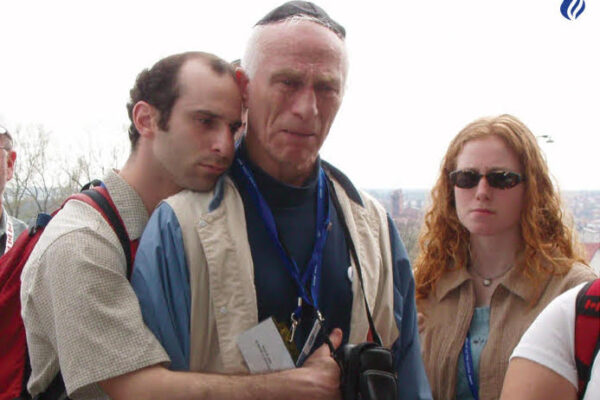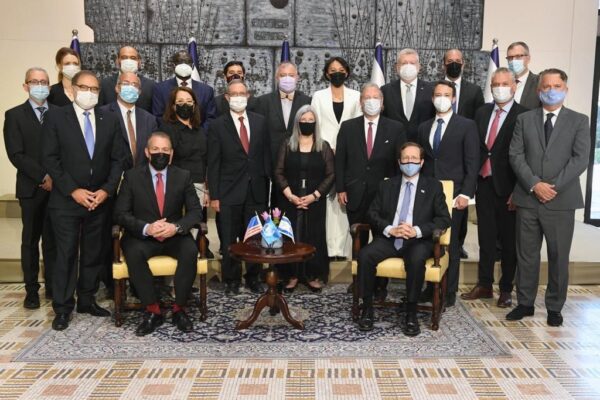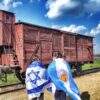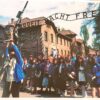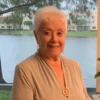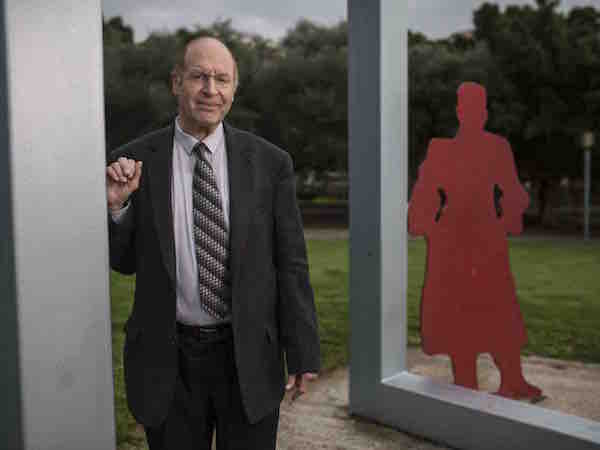
Dr. Gideon Greif. Tomer Appelbaum
Haaretz – Talking to: Dr. Gideon Greif, 65, expert on the history of Auschwitz and chief historian of Shem Olam: The Holocaust Faith Institute for Education, Documentation and Research. Where: A Tel Aviv café. When: Thursday at 7 P.M.
You returned from Germany today. What was the purpose of your visit?
I gave a series of lectures on the Holocaust. I lecture a great deal in Germany – German is my mother tongue – mostly to the young generation, to youth.
Do you detect a change or a certain trend in Germany over the past few decades?
I definitely see increasing interest in the Holocaust. I don’t know why, but there are large turnouts for my talks. Many young people come, you don’t have to persuade them, they want to listen and to learn. The survivors’ concern about forgetting and denial has proved unfounded.
A Hebrew edition has just been published of “Revolt in Auschwitz,” a book you wrote in German with the journalist Itamar Levin about a significant event in the history of the Holocaust that has been marginalized: the revolt by the Jewish Sonderkommando in Auschwitz
People are constantly amazed to hear that there was a revolt in Auschwitz, too. The cases of Treblinka and Sobibor are known, but the revolt in Auschwitz [in October 1944] was no less heroic than the others. Accordingly, Itamar Levin and I decided to write the book – we felt that we needed to do something in this connection. In general, the subject of the Sonderkommando [“special unit” in the Nazis’ euphemistic terminology] has hardly been studied. When I started to deal with it, in 1989, I was surprised to discover that it was not a subject that engaged hundreds or thousands of historians.
It’s simply too horrific.
That is precisely why I decided that I would be that historian. I interviewed survivors and rescued 31 testimonies of Sonderkommando survivors that would have been lost. Only two such survivors are still living.
Perhaps you could explain about the role of the Sonderkommando.
The members of the Sonderkommando in Auschwitz worked in the gas chambers. They were posted to the undressing rooms, where the victims had to disrobe; they were responsible for the removal of the bodies after the murder; for removing valuables from the bodies; for burning the bodies; for dealing with the body parts that did not burn completely; and finally they carried the ashes to the river and dumped them in the water. As Shaul Chazan, one of the Sonderkommando survivors, told me: At 9:30, a transport of 3,500 people would arrive, and four hours later, not a trace of them remained – as though they had never existed. [Chazan’s testimony appears in Greif’s “We Wept Without Tears”; Yale University Press, 2005.] The Sonderkommando carried out all those tasks, but it’s important for me to emphasize that they never took part in the work of murder itself. They did not murder anyone. Only the Germans threw the deadly gas into the chambers.
And what the Sonderkommando did was not by choice – it was forced on them.
Of course. They were told that this was their work, and they knew they would be shot if they refused. But from the moment they were chosen they were automatically doomed to death, because they knew too much. The veteran prisoners immediately apprised the newcomers of this. It was clear to them that they would die, and in fact they were all murdered, apart from the last group. They remained alive during the camp’s evacuation because of carelessness or a flaw in the Germans’ plan.
Why did the Germans choose Jews for this appalling task?
They could have used other prisoners, of course – there were many non-Jewish inmates in Auschwitz. Primo Levi wrote in “The Drowned and the Saved” that this was the most satanic crime of Nazism. He maintained that there was a hidden motive behind the pragmatic aspect; that by this means, the Germans tried to shift the burden of guilt to others, to the victims, to deprive them of the feeling of being innocent of any crime. I agree. They wanted to blur the difference between criminal and victim.
Women being taken to the gas chamber in Auschwitz. One of four photographs from Auschwitz-Birkenau in Nazi-occupied Poland, part of a series known as the Sonderkommando photographs.
In other words, the victim is an accomplice to the crime.
We don’t talk enough about the subject of humiliation in the Holocaust. If you look at the policy toward the Jews from 1933 on, you see that the idea of humiliation runs through it like a thread. Every act is accompanied by humiliation, including in the gas chambers themselves, where men and women are forced to disrobe together in the undressing rooms. Why were they made to undress? What’s the relevance? Only for humiliation. This is a dominant, fixed element, even in the period when policy toward the Jews consisted of deportation, not murder.
The camp inmates thought of the Sonderkommando as collaborators.
The attitude toward them was negative, and they had a terrible image, which was unjust. One of the goals of my life is to clear their name. You have to understand: The other camp inmates had almost no access to them and didn’t know what they were doing. They lived in separate blocks and were always among the Germans. They looked healthy, because they weren’t starved, like the other prisoners. People envied their living conditions. They had comfortable beds, and physicians were on hand for them. That contributed to the image, which is repeated in many books and in stories told by survivors.
I found reading the new book difficult, especially the part about their contact with those about to be murdered, in their final moments.
I want to say something important. I spoke at great length with members of the Sonderkommando, and I heard only empathy and compassion from them for those who were murdered. They tried to ease things for them in the nonexistent room for maneuver available to them. Josef Sackar, who was assigned to the undressing room, told me that he turned his eyes from the women as they disrobed. He did not want to embarrass them even more. A display of nobility of spirit.
It’s such an appalling situation. How could anyone bear the moment when they faced people who had just got off the transport train, knowing that they were being led to their death? What did they tell you about this?
Yes. They saw everything. They related how afraid people were, how they cried. Here was also the dilemma, of course: to tell them or not [about their imminent death]. In almost all cases, they did not tell them. Yehoshua Rosenblum told me that they were torn inwardly by this question. But only in rare cases did they tell – if they met someone they knew, or in a moment of weakness. They thought that in this way they were giving the victims a few more minutes of mercy. After all, if they were to tell the truth, they would only sow panic and terror. They certainly could not save them. Josef Sackar told me: I did not have the courage to tell them. Why should I frighten and anger them before their death? There were also cases in which they were perhaps able to fulfill a last request – to give them a slice of bread.
I ask myself about the situation of a person who experienced that horror all day, every day. How could they cope? They knew they were living on borrowed time – so, why? There is testimony by [Auschwitz commandant] Rudolf Hoess himself, who said, “I don’t know how they did it.”
There is no answer to that question. Consider that in the peak period, from May to September 1944, between 7,000 and 10,000 Jews were murdered every day, seven days a week in Auschwitz. I would not have been capable of doing it even for a minute. I would have killed myself on the spot. Some of the Jewish survivors I interviewed worked there for more than two years. To be surrounded for two years and more by bodies, ashes, screaming, chance meetings with relatives – I don’t understand how anyone could endure that. There is no such profession as “workers in a death factory.” There is no way to understand it. It is the first time in human history that people were made to work in a death facility where members of their own people were being murdered. It has no historical precedent.
Soviet soldiers are seen with some of the prisoners they liberated in Auschwitz II-Birkenau in this archival picture. Reuters
‘Extreme of the extreme’
Can it be said that even by the horrific standards of the Holocaust, this was an extreme event? That of all the terrible scenarios involving Jews in the Holocaust, this was apparently the bitterest fate of all.
I agree. There is nothing beyond this. I think that humanity here reached the outer limit of experience and endurance. I think that if we take all the phenomena that together constitute the vast subject called “Holocaust,” this is the height of the extreme. So many things happened there, some of which we don’t yet know, but nevertheless, this is the most terrible. The extreme of the extreme is the death factory and the Jewish slaves who worked in it. Both on the part of the Germans and on the part of the Jews. There is nothing more extreme.
How could they go on living after that?
I can’t answer that question. As an observer from the side, I can only tell you that the highest price was paid by their children. The second generation. I know the sons and daughters of Sonderkommando survivors. They are not happy people. There is no doubt that it’s necessary to address their psychological and psychiatric condition.
You, of course, are a historian and not a therapist – but you are also the only person who spoke with many of those from the Sonderkommando.
They said they turned themselves into robots. That they couldn’t feel anything. Otherwise it would not have been possible to live, they would have had to commit suicide. And the suicide rate among them was very low.
How is it possible to explain that?
I don’t know, but it’s not by chance. The suicide rate among the Sonderkommando inmates was significantly lower than in the camp in general. Why? Maybe because they wanted to tell the world what happened there. I really don’t understand it. It will probably remain one of the great unsolved mysteries of the Holocaust.
The revolt of the Sonderkommando in Auschwitz is also a mystery: a hopeless uprising. They knew they didn’t stand a chance. How do you understand their sheer motivation to rebel?
They knew, yes. It’s a revolt that says, effectively, “This far and no farther.” I say this, because we found echoes of their thoughts in the Auschwitz scrolls, the secret writings of a group from the unit that documented their inner lives. They wrote explicitly, “Our hands will not shed the blood of the Jews of Hungary.” They understood that this huge community of some 800,000 souls was about to arrive, and they could no longer cope.
A revolt that was actually a declaration.
Consider what that revolt required: making decisions, organizing, compartmentalization, acquiring weapons, a logistical plan. They had to beware constantly of betrayal, informers. At one stage, the person who was supposed to be the commander of the revolt was executed, shot by the commandant of the crematoria, who suspected him, and they had to start over. A revolt requires thinking by free people, not of slaves, and I think that the spirit here was of liberation from oppression. This is an unknown story of heroism that needs to be exalted. Including the heroism of Jewish women in Auschwitz.
The female inmates of the munitions factory were true heroes. Every day, they smuggled out gunpowder on their persons, even though they underwent thorough checks and searches all the time. Most of them were involved in the smuggling. Roza Robota, the inmate who recruited them, was caught along with three other women. After the revolt, when they were caught, they didn’t crack, either in interrogations or under torture. They did not betray anyone.
What was the plan?
The plan was very complicated, because the two Sonderkommando groups were separated. Coordination was impossible [between them]. So in the end they each operated differently. The group that worked in gas chambers and crematoria II and III were able to cut the electrified fence with special cutters and escape a short distance. The Germans caught them almost at once, shot some of them and burned the others to death in the barn where they were trying to hide. The second sector was the courtyard of gas chambers and crematoria IV and V. SS personnel came there at midday with a list of names, which included a few hundred from the Sonderkommando. They understood that their time had come and they simply pounced on the SS personnel. Some of the inmates made a run for it, even if only for a short distance, before being caught and shot, and the building of crematorium IV was set ablaze or blown up – we don’t know and probably will never know, but that was a great achievement in itself. Three SS men were killed.
The whole revolt lasted a few hours, and above and beyond all these actions, each of which was daring in itself, the very fact that the revolt even occurred bespeaks tremendous heroism. It’s one of the reasons that the Germans, in their official documents, don’t mention the revolt. Not by so much as a word. They were simply ashamed.
Almost everyone who took part in the revolt was murdered.
Among the Sonderkommando, 451 people were murdered. Three people survived the revolt: Filip Muller and two brothers, Shlomo and Abraham Dragon. I interviewed all three. At the moment of truth they didn’t actually manage to take part, but they were witnesses to the planning and implementation. The Sonderkommando members who did not take part in the revolt were not executed immediately, but afterward. In the end, ahead of the evacuation of Auschwitz, on the night between January 17 and 18, 1945, a group of between 80 and 100 of them remained who succeeded in getting out of Auschwitz alive. They were in good physical condition and were able to survive the death march.
Why did you choose to study Auschwitz?
From the study of Jewish history I got into research of the Holocaust and of Auschwitz. I never made a decision to devote my life to the study of Auschwitz, but I don’t regret it.
Isn’t it a daily encounter with darkness and horror?
I somehow manage to live with it. This may sound pathetic, but I really do feel a certain sense of mission.
The last thing I want is to detract from the value or significance of your work, but I just wonder how you cope. There were many things I read in the book and in the testimonies that I wasn’t capable of talking about in this conversation. Too awful. Yet you live what’s written there.
I understand and agree that it’s difficult. I try not to ask myself those questions.
Don’t you wake up from nightmares?
Not anymore.
And before?
In the first year or two in which I dealt with Auschwitz, I suffered from vomiting. I threw up all the time. Maybe it’s best not to recall this, it’s so unpleasant. But I truly feel that I have to do what I am doing. No one else would consent to do it. If I hadn’t interviewed the members of the Sonderkommando, they would gave died without their history having been documented. The revolt needs to be acclaimed. It’s a story of pure Jewish heroism, one of the few miracles that occurred in the Holocaust.
Originally published HERE

